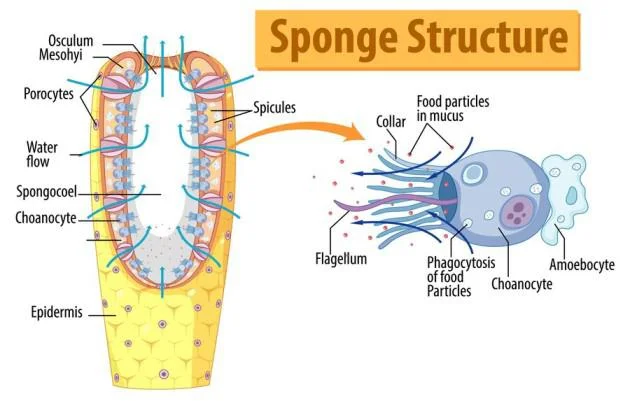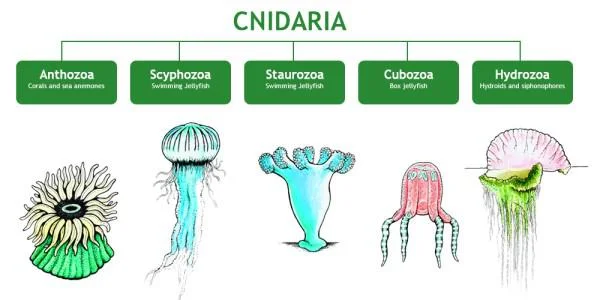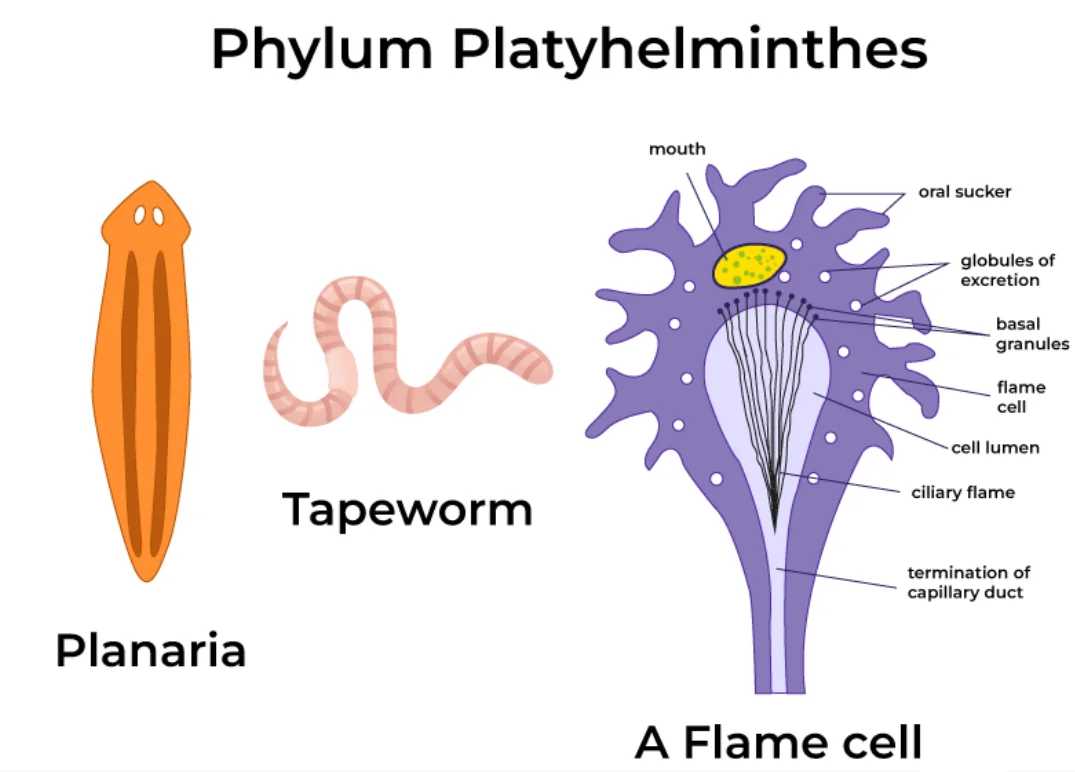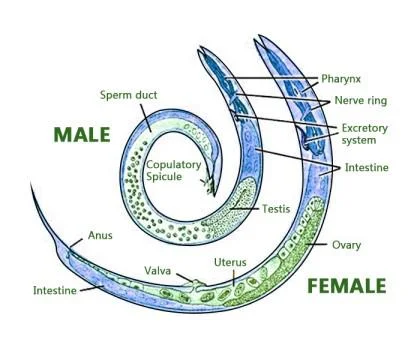The animal kingdom classification systems categorize animals into groups (phyla) based on shared characteristics. This section explores three key phyla: Porifera (sponges), Cnidaria (jellyfish, sea anemones), and Platyhelminthes (flatworms).
Phylum- Porifera
About: Members of this phylum are commonly known as sponges.
- They are generally marine and mostly asymmetrical animals.
- Dimensions: They range in size from a few millimetres to a few meters.
- Sponges are filter feeders: They filter out food particles suspended in the surrounding water as they draw it through their body.
- Sponges have a water transport or canal system.
- Sponges lack tissues.
- Features: The body is supported by a skeleton made up of spicules or spongin fibres.
- Sexes are not separate (hermaphrodite), i.e., eggs and sperm are produced by the same individual.

Phylum- Coelenterata (Cnidaria)
About: They are aquatic, mostly marine, sessile or free-swimming.
- The name cnidaria is derived from the cnidoblasts or cnidocytes.
- Features: Cnidoblasts are used for anchorage, defence and for the capture of prey.
- Cnidarians exhibit tissue level of organisation and are diploblastic.
- Example: All coral reefs, Physalia (Portuguese man-of-war), Adamsia (Sea anemone).

Phylum- Platyhelminthes
About: These are commonly known as Flatworms.
- These are mostly endoparasites found in animals, including human beings.
- Flatworms are bilaterally symmetrical, triploblastic and acoelomate animals with organ level of organisation.
- Features: Specialised cells called flame cells help in osmoregulation and excretion.
- Some members, like Planaria, possess high regeneration capacity.
- Example: Taenia (Tapeworm), Fasciola (Liver fluke).

Phylum- Aschelminthes
About: Phylum- Aschelminthes commonly called Roundworms.
- They may be free living, aquatic and terrestrial or parasitic in plants and animals.
- Example: Roundworms have an organ-system level of body organisation.
- Features: Males and females are distinct.
- Often females are longer than males.
- Example: Ascaris (Roundworm), Wuchereria (Filarial worm), Ancylostoma (Hookworm).

Conclusion
These few phyla showcase the incredible diversity within animals. Porifera’s simplicity contrasts with Cnidaria’s stinging defense and Platyhelminthes’ parasitic adaptations. Each phylum reflects a unique evolutionary path, enriching Earth’s animal diversity.
![]() May 28, 2024
May 28, 2024
![]() 1239
1239
![]() 0
0



